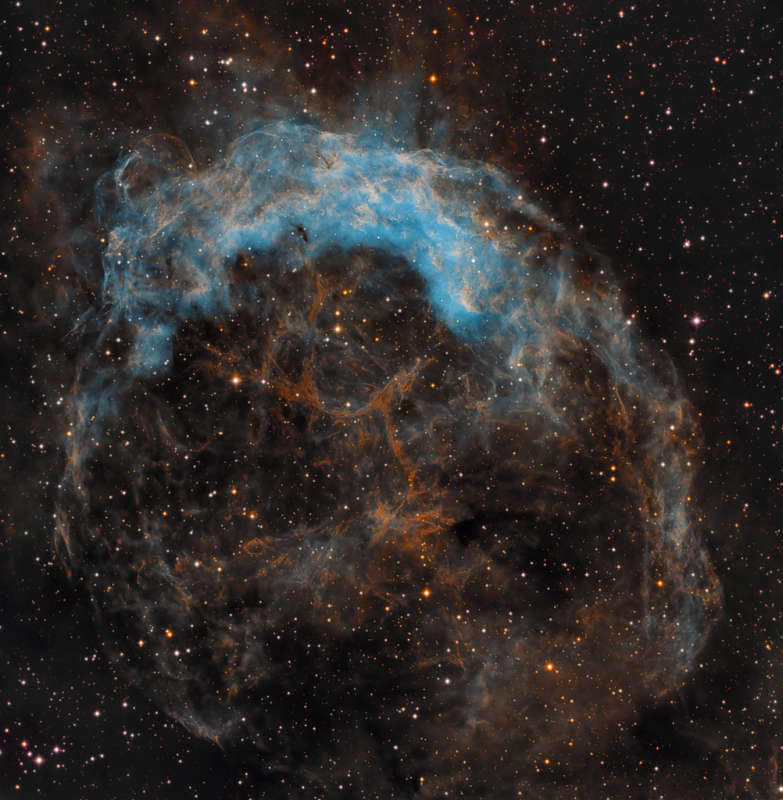
|
Credit & Copyright: Mike Selby
and
Roberto Colombari
Explanation:
NGC 3199 lies about 12,000 light-years away,
a glowing cosmic cloud in the nautical southern constellation
of Carina.
The nebula is about 75 light-years across in this
narrowband, false-color view.
Though the deep image reveals a more or less complete
bubble shape, it does look very lopsided with a much brighter edge
along the top.
Near the center is a
Wolf-Rayet
star,
a massive, hot, short-lived star that generates an intense stellar wind.
In fact, Wolf-Rayet stars are known to create nebulae
with interesting shapes
as their powerful winds sweep up surrounding
interstellar
material.
In this case, the bright edge was thought to indicate a
bow shock
produced as the star plowed through a uniform medium, like a boat
through water.
But
measurements
have shown the star is not really moving directly
toward the bright edge.
So a more likely explanation is that the
material surrounding the star is not uniform, but
clumped and denser near the bright edge of windblown NGC 3199.
|
January February March April May June July August September October November December |
| |||||||||||||||||||||||||||||||||||||||||||||||||||||||
NASA Web Site Statements, Warnings, and Disclaimers
NASA Official: Jay Norris. Specific rights apply.
A service of: LHEA at NASA / GSFC
& Michigan Tech. U.
Based on Astronomy Picture
Of the Day
Publications with keywords: Wolf-Rayet star - stellar wind
Publications with words: Wolf-Rayet star - stellar wind
See also:
- APOD: 2025 November 24 B Apep: Unusual Dust Shells from Webb
- APOD: 2025 March 17 B Thors Helmet
- APOD: 2025 February 3 B Wolf Rayet Star 124: Stellar Wind Machine
- APOD: 2025 January 29 B Dust Shells around WR 140 from Webb
- APOD: 2024 November 17 B LDN 1471: A Windblown Star Cavity
- Sharpless 308: The Dolphin Head Nebula
- The Nebulous Realm of WR 134
